I first stumbled upon Fabian’s Instagram profile (4x4_fabian) a few years ago when I was seriously considering swapping my 1986 Volkswagen T3 Syncro for an LT 4×4. The LT 4×4 is, at first glance, the obvious upgrade to the Syncro, and as my life on the road was permanent, I figured the extra space would make things more comfortable (I still think about that today). I reached out to Fabian, who, despite his love for the LT, systematically listed the positives and negatives. His comprehensive overview ultimately deterred me from making this transition; in retrospect, it looks to have been a sensible decision. The LT 4×4 remains one of my all-time favourite overland vehicles and is, by all accounts, an exceptionally capable platform for all-terrain travel. However, I realised that the process of starting over with another vehicle would once again delay my long-term travel plans. Thanks to Fabian, I recognised that the Syncro was already a more than capable vehicle for seeing the world.
Fabian is, and he’ll hate me saying this, a legend. He is someone who puts the emphasis on travel and experiences rather than the vehicle and accessories. That’s not to say his LT 4×4 setup isn’t badass, but it’s clear that he doesn’t allow himself to get caught up in constant modifications and lusting over the latest must-have accessory. I’ll be the first person to admit that I spend way too much money on my Syncro and gear whilst simultaneously crippling my travel budget. Hence, it was a pleasure speaking to an adventure guru who understands what’s necessary for extended vehicle travel. In this interview, I explore Fabian’s passion for overlanding, discuss his trip from Australia to Germany in a 1964 Series 2A Land Rover, his LT 4×4 adventures in Europe and Central Asia, and, of course, take deep dive into what makes “Gertrude” so special.
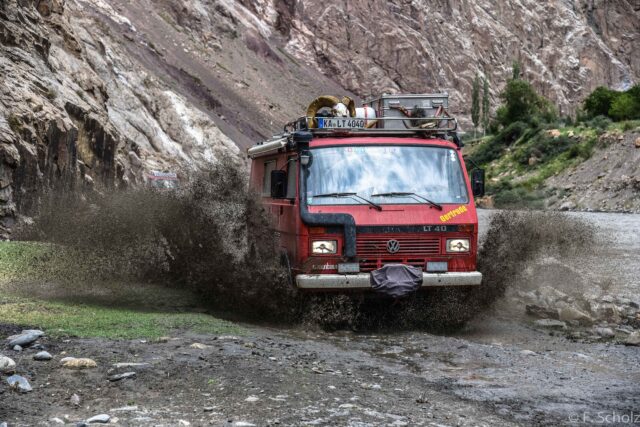
Can you tell me a little about yourself? What does your day-to-day look like?
My name is Fabian; I am 36 years old, married, and have two kids. Before our big travels in 2018, I worked as a mechanical engineer, doing development work for hydraulics. A good job, I liked it, but I wasn’t totally happy. There was no possibility for a gap year to travel, so eventually, I quit. I decided I’d just get a job when I finished my adventures, which was easy, to be honest, and I returned home to a job with Bosch (they make a lot of car parts). At the same time, our government was recruiting teachers to educate apprentices, so I went for it. Right now, I’m teaching subject technology, e.g., how a milling machine works. I really enjoy working with young people. I’m on less money but much happier. My wife is also a teacher, which should mean we can take an extended trip during the summer holidays together.

What’s the story behind your love of overland travel? How did it all begin?
At 18 years old, I drove an old Ford Transit with my friends to Croatia for a four-week camping holiday. Beforehand, I went to the library and picked up a German book about people travelling for 16 years by motorcycle (Abgefahren: In 16 Jahren um die Welt). This style of travelling was new for me, and I read the whole book in a very short time. It sounded great, so I tried to convince my friends that we should continue on from Croatia and head to Bosnia. Unfortunately, my friends were content in Croatia drinking beer and relaxing on the beach. But one year later, we returned, and I finally convinced them to go.
I then moved to Australia between 2007-2009 and had many adventures, like driving into the Simpson Desert or the Gibb River Road. I was becoming more fascinated with this style of travelling, and when Australia didn’t feel adventurous enough anymore, I started thinking about India. This planted the idea of travelling overland back to Germany from Australia. I started researching, but at the time, there was no Instagram or Facebook, so I found some useful websites and blogs. I began planning, and during the process, met a good friend. One day I asked, ‘Do you want to drive back to Germany?’ He said, ‘That’s crazy.’ Anyway, after beers, we decided to do it. We calculated we’d need $10,000 AUD, the Land Rover would be shipped to India, and we’d drive back to Germany. We did a lot of overlanding in Australia, but, in my eyes, the real overlanding started when we shipped the car to Calcutta, then drove from India to Nepal, back to India, then Pakistan, and finally back to Germany.
Check out this incredible journey here: outback-orient.net


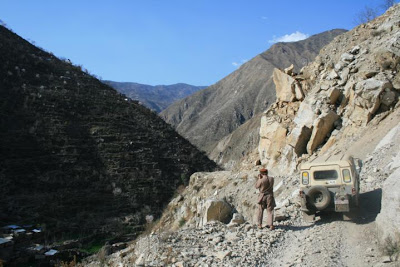
It was a 1964 Series 2A Land Rover, breaking down all the time, but it never gave up. There was always something broken. When I told Australians I was going to drive this car all the way back to Germany, they just started laughing. On the trip we had people join us, which was helpful as we were already short of money in Pakistan and could therefore share the petrol costs. Ten thousand dollars was not enough. We agreed because it was my car, I would pay for the repairs in Australia to make the car ready, and we’d share the cost of maintenance on the road. Fifteen years later, we still laugh about the situation; we were often arguing about money, but now I have a different perspective. If you’re short of money, it’s a challenge, but it’s not worth falling out with your friend.
After 10 months of travelling, we reached Germany with the Land Rover. The following 10 years, I did have some adventures, but not on the same scale. I was largely studying and marrying my wife. When we eventually discussed the idea of overland travel again, my wife said we needed a bigger car, which was the motivation for buying the Volkswagen LT Allrad 4×4.

Why did you choose the Volkswagen LT 4×4?
The four-wheel-drive system is good, having low range and diff lockers was important. If I could have afforded a Mercedes Sprinter 4×4, I would have done it. There’s a lot of people who really love the car, and I do too, but I also hate it at times!
The LT was on sale in Austria for 6,000 €. It was used by the Austrian fire brigade. I was already aware of the LT’s known issues and was very clued up on the forums with what to expect. There were points on our travels where 2WD was just not an option. I knew I wanted low-range, diff-lockers, a diesel, and there are not many vehicles at this size with the same specifications (unless you spend a lot of money). Like I said, I love it, but I hate it—sometimes it drives me crazy. Just recently, I had to change the whole axle just to go on holiday. This doesn’t happen so often with a Sprinter.
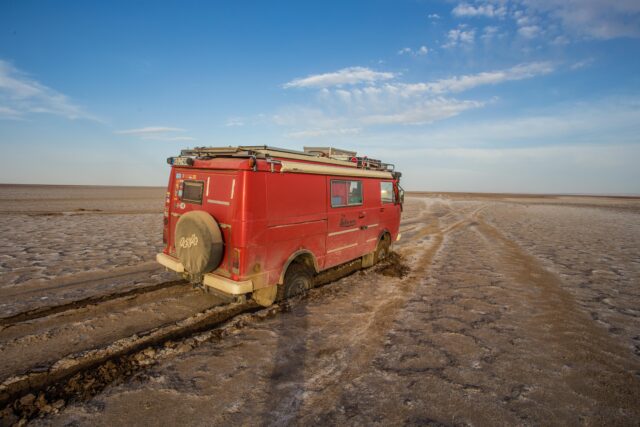
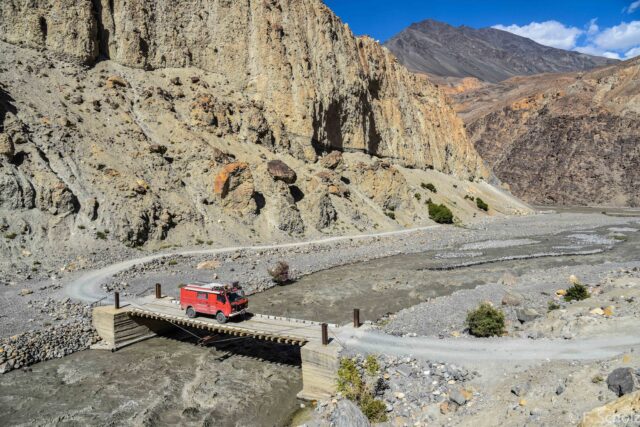
The LT is called “Gertrude.” Can you explain why?
It’s the name the Austrian fire brigade gave the LT. I’m still in touch with this lady called Gertrude. It’s named after her because she organised an event to help raise money to purchase this vehicle. Whilst fire trucks are paid for by the government, if you need additional equipment, the funds are raised by the local people. The fire service in the small villages is often supported by volunteers. On the one hand, it’s a very old name, but it’s funny. I never say LT around my friends; they all know who Gertrude is!

One of my favourite things about your rig is that it’s not heavily modified. What were your reasons for this?
I wanted to keep it basic, simple to fix. Volkswagen built the LT carefully; they ran many extensive tests and released the vehicle at an optimal final setting. If you change anything, it’ll have an affect on the whole car. It just has to be reliable and running well, and I don’t want to spend tens of thousands of euros on fancy equipment. One of the best ways to improve reliability is to retain as many of the stock components as possible.
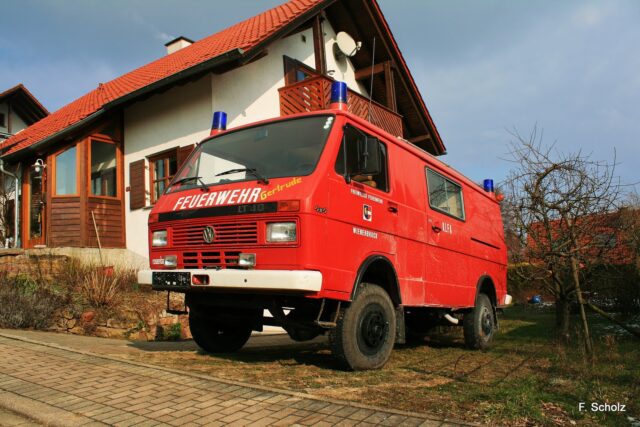
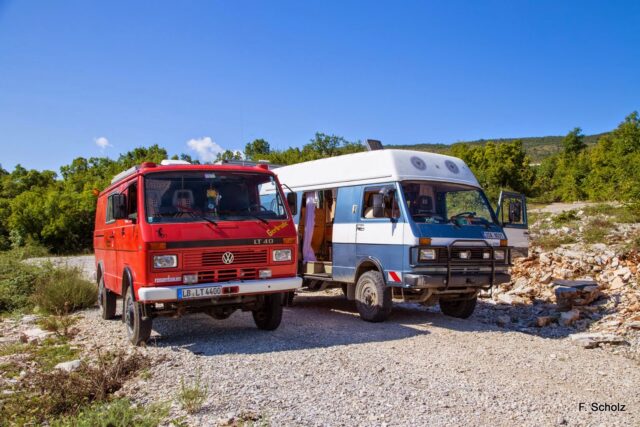
So, where have you taken the LT?
The big trip in the LT meant leaving in February 2018 and returning in December 2018. I first went with a friend to the Balkans snowboarding: Germany, Austria, Slovenia, then Bosnia. I continued to Montenegro, Kosovo (a very good place for snowboarding), North Macedonia, Greece, Turkey, Iran, Turkmenistan, Uzbekistan, and Kazakhstan. The trip was originally planned for the whole family, but in the end, my wife and young daughter joined me in Kazakhstan. We travelled central Asia together, then they flew back and returned to do Georgia and Turkey. In Central Asia, we went from Kazakhstan, Kyrgyzstan (back and forth between Kazakhstan and Kyrgyzstan), and from Tajikistan back to Uzbekistan. Then from Uzbekistan, I drove the long boring route towards the Caspian Sea to get a ferry to Azerbaijan. Back in Europe, the trip went from Azerbaijan to Georgia, Turkey, Greece, Bulgaria, Romania, Moldova, Ukraine, Slovakia, Austria, and finally back to Germany.
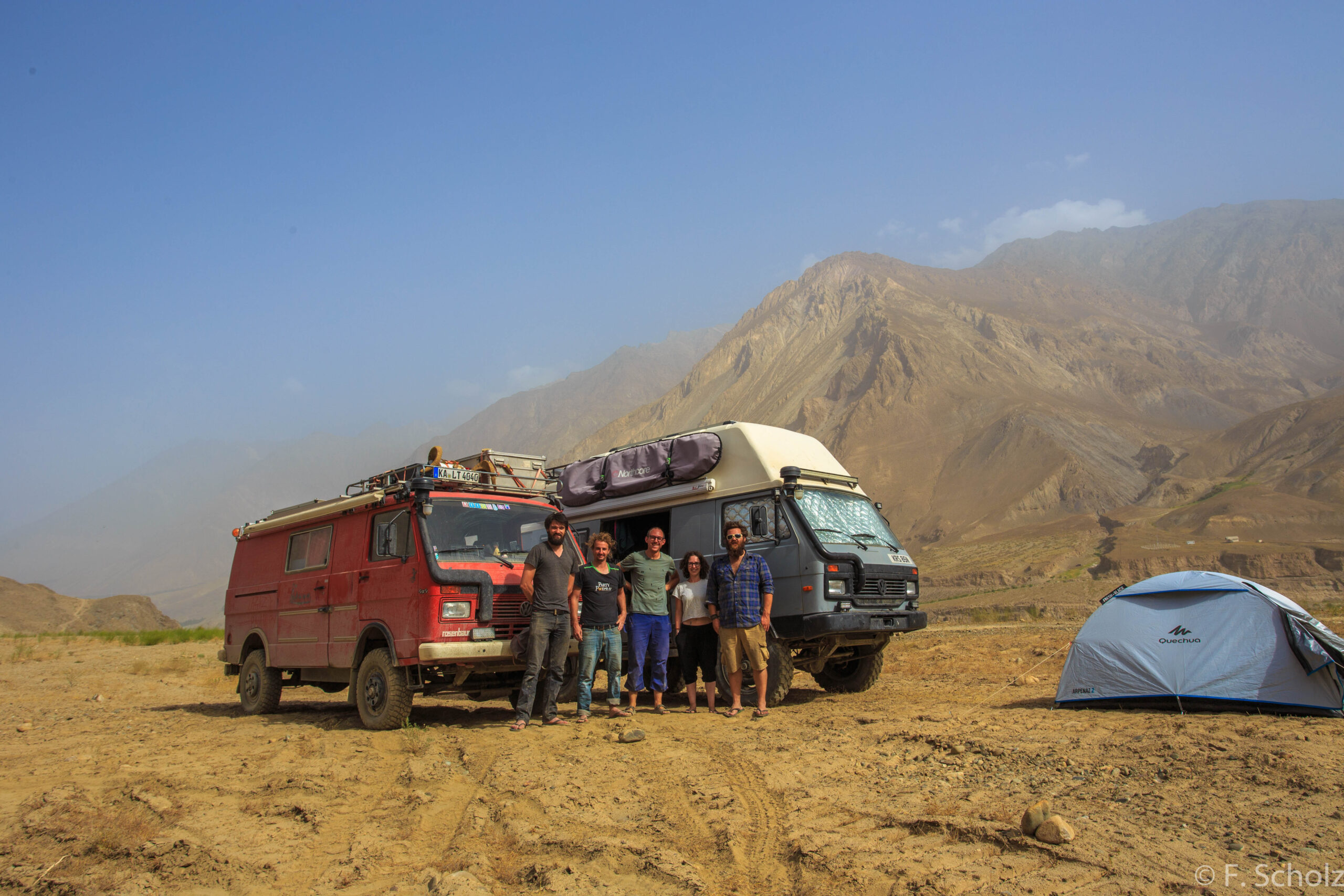
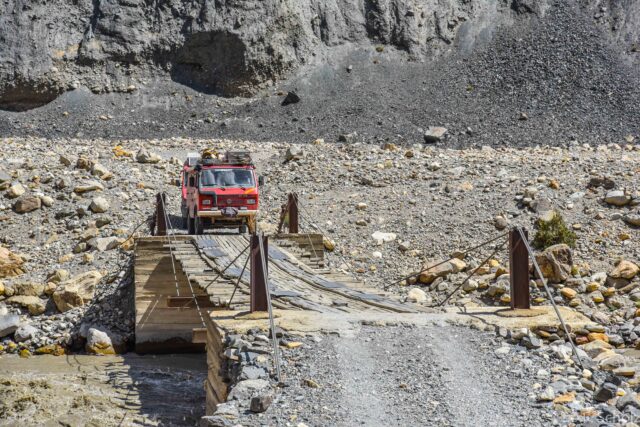
What was the most challenging overlanding route you tackled in the LT?
Honestly, you can take your car to the maximum limit anywhere, even locally. There are different types of drivers and many styles of driving. There’s some people who want to challenge themselves constantly, and the trail can’t be difficult enough. If you’re far away from Germany, in remote parts of Central Asia, most people aren’t taking their car to the limits. If you’re talking about a road that was challenging whatever your approach, then it was in Tajikistan, the Bartang Valley.
It’s not a secret, but most people take the “normal” Pamir Highway instead, and the Bartang Valley is far more special. It’s doable with a 4WD or motorbike, but probably not wise in a 2WD. There was not much in the guidebook about the route, other than something like, “If the vehicle survives the journey, then the driver won’t.” We asked some motorbike travellers at a hostel, and they said we’d never make it, that there are landslides all the time. We wanted to try; it sounded like an adventure. We completed the route with another vehicle, an IVECO daily 4×4. It was challenging, but with a second vehicle, it makes a real difference. One vehicle is perhaps a different story. At the top of the valley, on the Pamir Highway, you’re at 4,000 metres, and you’re driving down the valley day-by-day very carefully until you end up back on the main road after several days. In some places, you have to cross rivers, or the river is the road. It was challenging, but it was absolutely worth it! Just to drive the Pamir Highway, you do not need to have 4WD; we met some German guys with a 500 € 2WD Opel Astra.

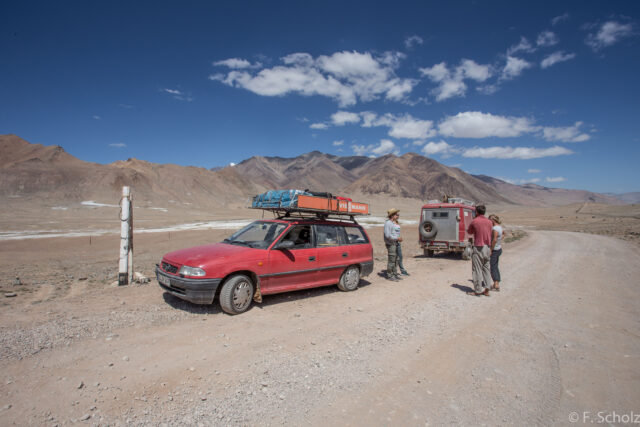
I love that you travel with your family, and know this inspired some modifications. Any tips for others considering travelling with their family in a vehicle?
The LT was not built in one session. We bought the truck and then went straight to Albania. The build was a step-by-step process. We did a three-month trip to Spain, Portugal, and France when our daughter was seven months old. We built her a bed and a special shelf for baby stuff, but we didn’t make many child-specific modifications. The most important thing is the parents themselves. Something [what] helps is having a safe space for the child to go inside and relax. This is trickier with smaller cars. If it’s all too much outside, they can cosy up inside and read a book or play with their toys. This is why we have a fixed bed in the back, which is also good for playing and jumping or reading a book whenever your child needs some retreat.
What modifications did you choose to make to the LT, and what are your favourites?
One of the best modifications was retrofitting suspension seats in the front like lorry drivers have. These made a huge difference to comfort as the LT suspension is quite hard riding. We have three seats in the front, so even my little daughter has one. My daughter’s seat was actually cut out of an excavator. I modified it to guarantee it was perfect for her weight. I then engineered it correctly for a child’s seat whilst also allowing it to rotate if she wanted to sleep. As a mechanical engineer, I ensured the whole vehicle would fall to pieces before that seat ever gave up.
Another excellent addition to any vehicle for long-term travel is a large awning. As usual, I did this cheaply and got an old one on Ebay from a caravan. It’s 3.5 metres, which would’ve cost a lot if it was a fancy overlanding brand, but this cost me 100 €. I remember parking in Kazakhstan in a canyon near a beautiful river, and having this big awning was amazing. It was great that my daughter could play in the sand but still be completely shaded.
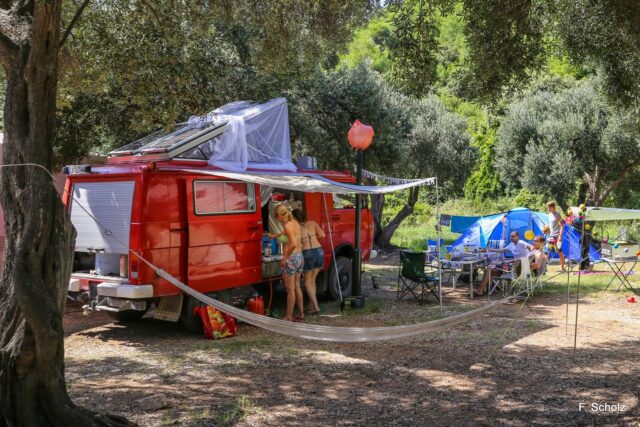
Any words of wisdom when it comes to modifying a classic vehicle like this?
It’s good to know your car; I wouldn’t recommend buying any vehicle and going on a trip straight away. Drive it for a couple of years, get to know how it feels, how it sounds. It’s amazing how in tune you get with the vehicle. It’s important, before leaving Europe at least, that you know how to work on your truck and have some degree of self-sufficiency. Also, don’t spend all your money on the vehicle and modifications—this is something I see a lot. I’ll go to overland shows, and people have spent crazy money on their rigs, and they haven’t even left Central Europe. Save money for travelling.
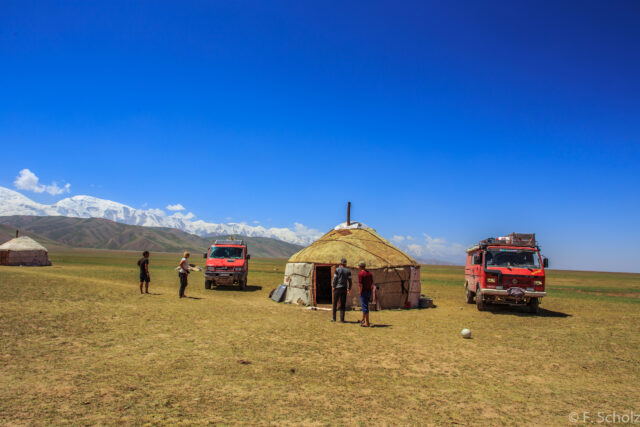
If you’d like to follow Fabian’s travels, then check out his Instagram: @4x4_fabian
Volkswagen LT 4×4
Specifications
1993 VW LT 4×4
Power
6-cylinder 2.4-litre turbo-diesel 95 horsepower
5-speed transmission VW
Transfer gearbox: new process gear NP242 (also found in Jeep, Ram, and others) with low range.
Suspension and Drive
Original VW 3x Difflock front, back and centre
Original VW suspension
Wheels and Tires
Original VW split rims
BFG MT 235/85R16
Recovery and Armor
Winch, 6,000 kilograms
Original VW snorkel
3x aluminium sand ladders
Hi-Lift jack
Accessories
Engel fridge, approx. 25 litre
2 x 100-watt solar panels
3 x Optima Yellow Top battery, 75 amp hours
Eberspächer diesel heater with high altitude kit
Berkut R20 compressor (Russian)
Coleman unleaded two-burner stove
Fuel Capacity
110 litre main tank
80 litre additional tank
3 x 20 litre army steel jerry cans
1 x 5 litre petrol (for stove)
Water capacity
100-litre water tank
1x 20-litre plastic jerry can for water
2x 20-litre Swiss army water bag
Resources
vwlt.co.uk

Our No Compromise Clause: We carefully screen all contributors to make sure they are independent and impartial. We never have and never will accept advertorial, and we do not allow advertising to influence our product or destination reviews.


